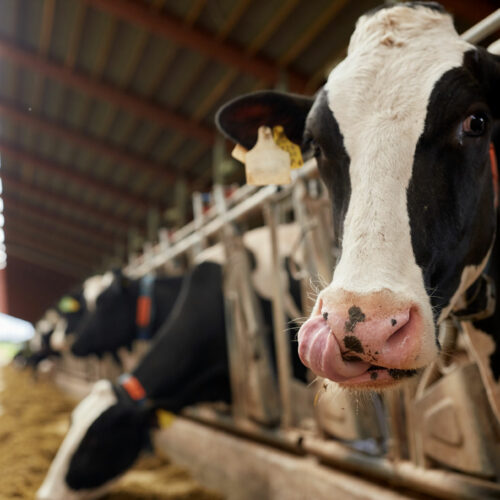
Exotic Christmas tree species take root in the Northwest
Listen
(Runtime :54)
Read
Christmas trees are big business out West, but a hotter climate means challenges for tree growers.
John Tillman owns Tillman Christmas Trees and has acres of Noble, Nordmann, Fraser, Korean and Douglas fir trees covering his farms in Western Washington.
“We’ve had two heat episodes in the last two years of 105 degrees or more that really burnt up some of our trees,” said Tillman, who lost about 5,000 trees to heat damage last summer.
When he first started growing his own trees in the late 1980s, Tillman said he never bothered watering his trees at all. Now, he waters his newly planted seedlings in the middle of the summer if there is an excessive heat spell. He is also looking into new technology, like drip lines.
“Growers are experiencing increasing problems with high temperatures and moisture stress during the summer,” said Gary Chastagner, a research plant pathologist at Washington State University’s Puyallup Research and Extension Center.
The most popular breeds of Christmas trees are the Fraser fir, Douglas fir and Noble fir. Now, Chastagner is experimenting with exotic species of fir from the other side of the world that might better withstand hotter conditions amid climate change.

Chastagner and his research team are looking into conifers with resistance to Phytophthora root rot. (Credit: Washington State University)
In his latest experiment, Chastagner and his team at WSU are monitoring sites where Eurasian species of fir trees are being grown at sites in Washington, Oregon and California.
“We’re finding that some of the Eurasian species, such as Nordmann, Turkish and Trojan fir, have the ability to perform fairly well under these droughty conditions,” he said.
The Pacific Northwest leads the nation in Christmas tree production, Chastagner said. Oregon produces 4.7 million Christmas trees each year, which is more than 30% of Christmas trees in the U.S.
Washington state is fourth in holiday tree production in the country. There are nearly 400 Christmas tree farms statewide.
Colloquially known as “Dr. Christmas Tree,” Chastagner has worked for more than 40 years to help find solutions to tree disease, harmful insects and a changing climate for Christmas tree farms across the country.
Research trials, like the one underway across several Western states, can last for a decade, Chastagner said. Researchers want to observe how the trees grow in irrigated sites as well as ones without water, and how well the exotic breeds can resist plant diseases and insects over the lifespan of a conifer, he said..
“Already, we’re seeing some differences in seedling survival,” he said.
It takes about eight to 10 years to grow a Christmas tree. As the tree grows over time, diseases can become more prevalent, and insects that aren’t common in young trees can move in and cause problems, Chastagner said.

Gary Chastagner, center, talks with a grower and wreath evaluator. (Credit: Washington State University)
“We monitor these plantings to really understand what the genetic variation is with these trees over the entire rotation, not just seedling survival,” he said.
Scientists also evaluate characteristics like branch structure, and form quality of the trees, Chastagner said, which is important for people when selecting a Christmas tree for the holidays.
“We do post harvest trials on the trees in the genetic trials to identify trees that have superior needle retention characteristics, which is obviously very important for Christmas trees,” he said.
Research from Chastagner and his team has allowed growers to continue producing high-quality trees, Tillman said.
“Chastagner’s commitment to our industry the last 40 years has given us solutions farmers continue to use across the Northwest,” Tillman said.
The search for a new scientist
After a long and famous career, Chastagner will officially retire this spring. WSU has created an endowment to support Christmas tree research and hopefully fill his position with a new scientist, Chastagner said.
“Gary Chastagner’s work with the Christmas tree and ornamental industries has been a huge benefit to not only those industries, but nearly everyone in Washington,” said Wendy Powers, the Dean of WSU’s College of Agricultural, Human and Natural Resource Sciences.
“No one can replace Gary as he heads into a well-deserved retirement, but we will do our best to find a scientist that can continue his legacy and maintain our sustainable natural resources,” Powers said.
Even if the next pathologist doesn’t know everything about Christmas trees, they’ll learn over the years, just like he did, Chastagner said.
“They’ll identify new research activities in the future that will help benefit the stakeholders they’re working for,” he said.
















